Abstract
CBA mouse antibodies to oxazolone were assayed by direct and antiglobulin augmented haemagglutination, using oxazolone coupled sheep erythrocytes. The antiglobulin Coombs' test was simplified by eliminating washing the sensitized cells and running the entire assay in a microtitre plate. Oxazolone antibodies of IgM, IgG1 and IgG2a classes were found in unimmunized mice, and antibodies of significantly higher titre were found in IgM, IgG1, IgG2a, and IgG2b classes of contact sensitized mice. Because the demonstration of oxazolone antibodies in the sera of unimmunized mice required highly oxazolonated SRBC, it was suggested that these antibodies are of relatively low binding avidity.
Full text
PDF

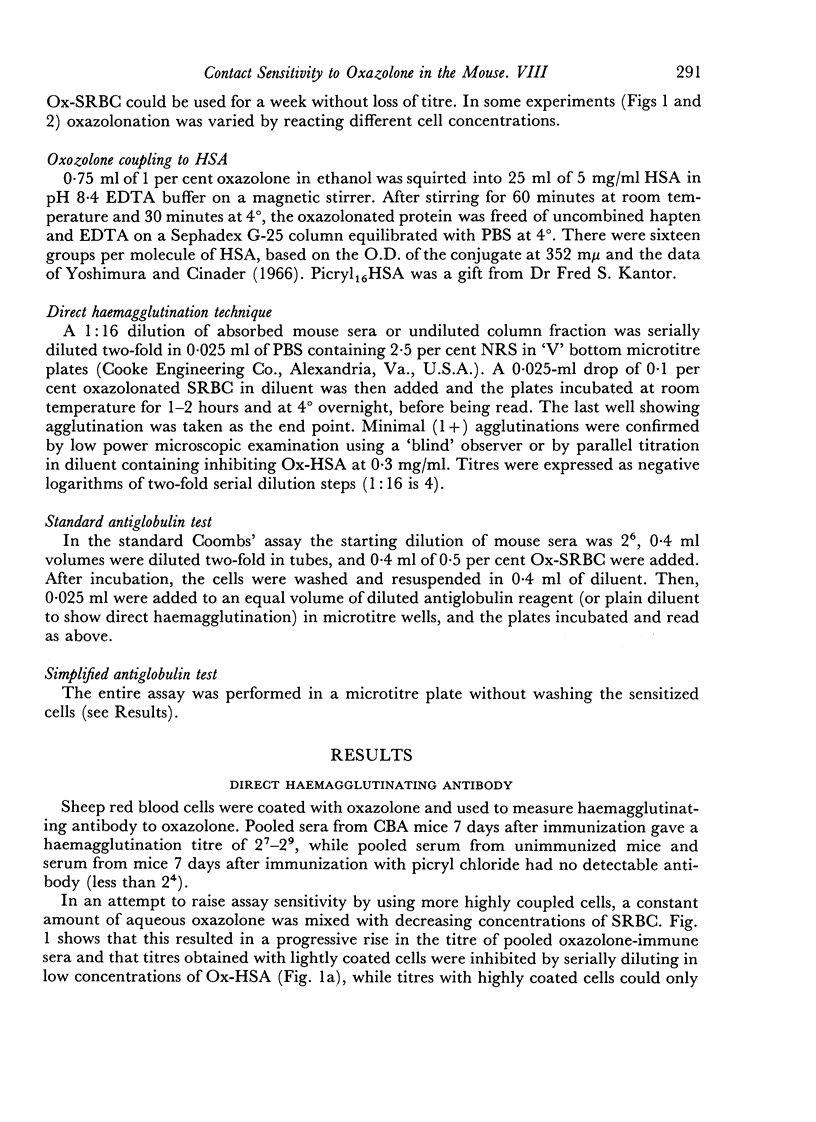
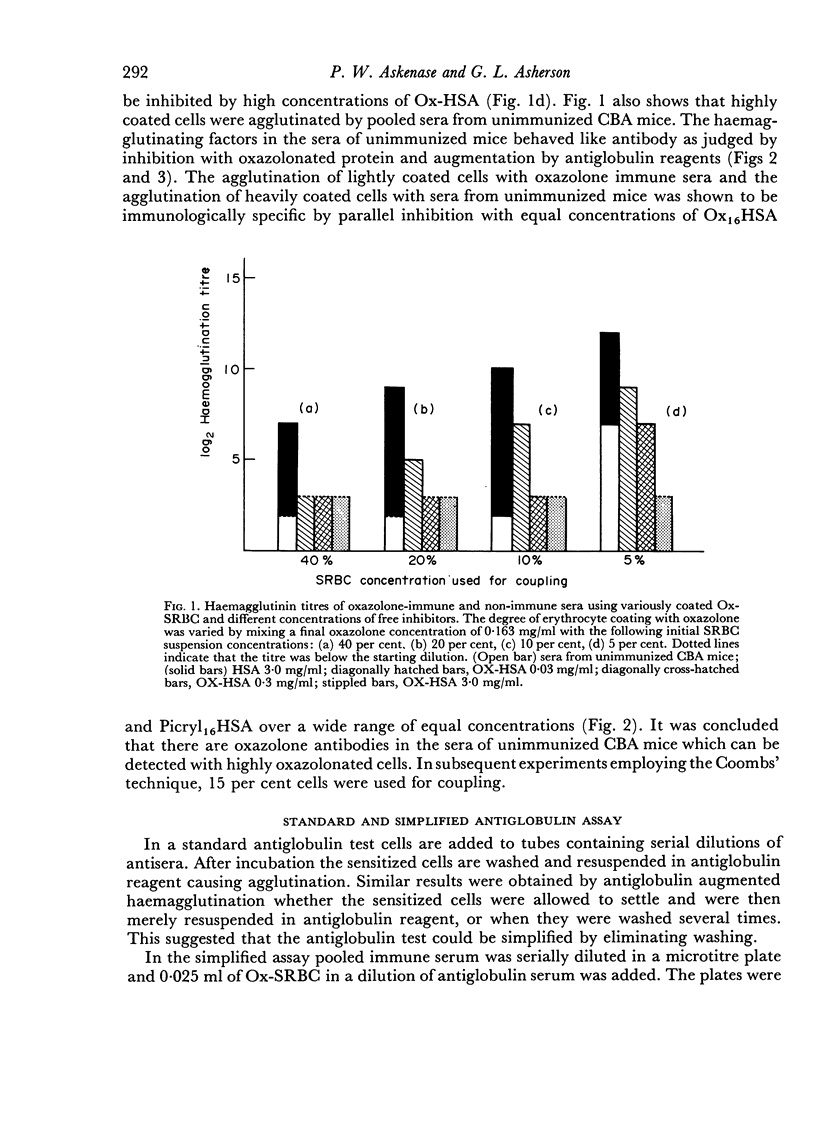
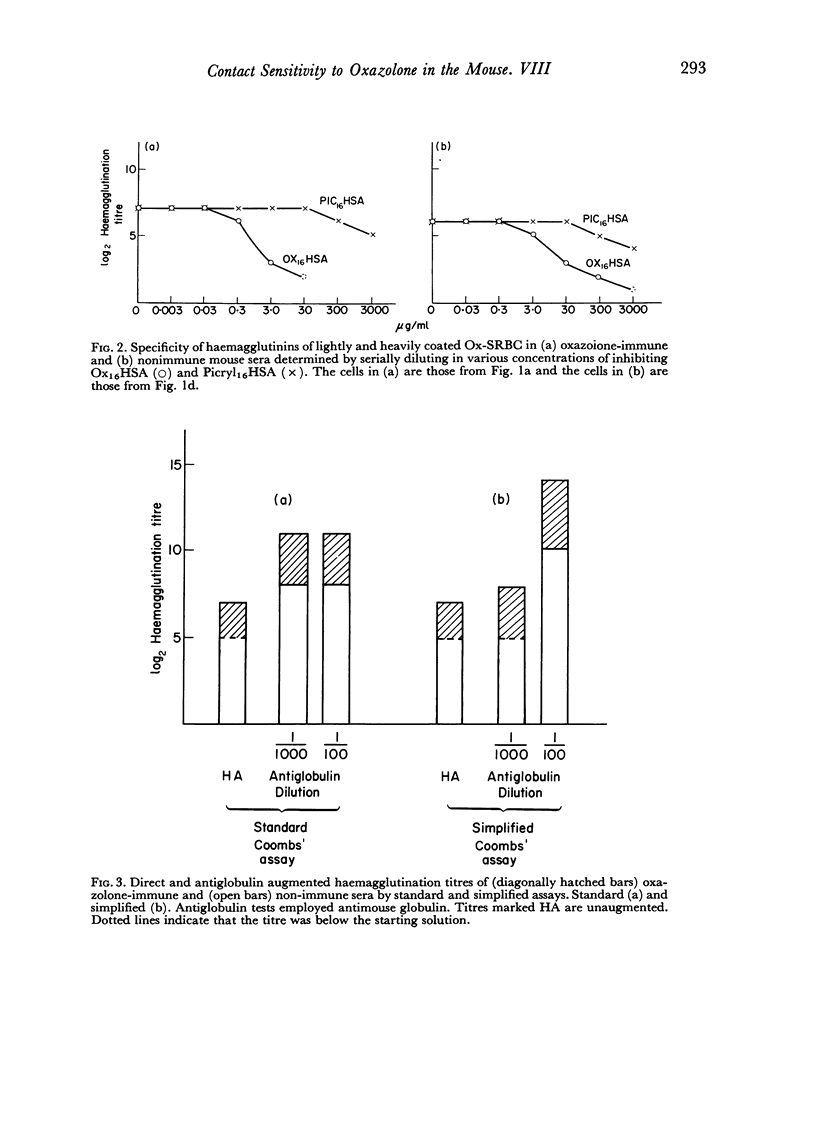


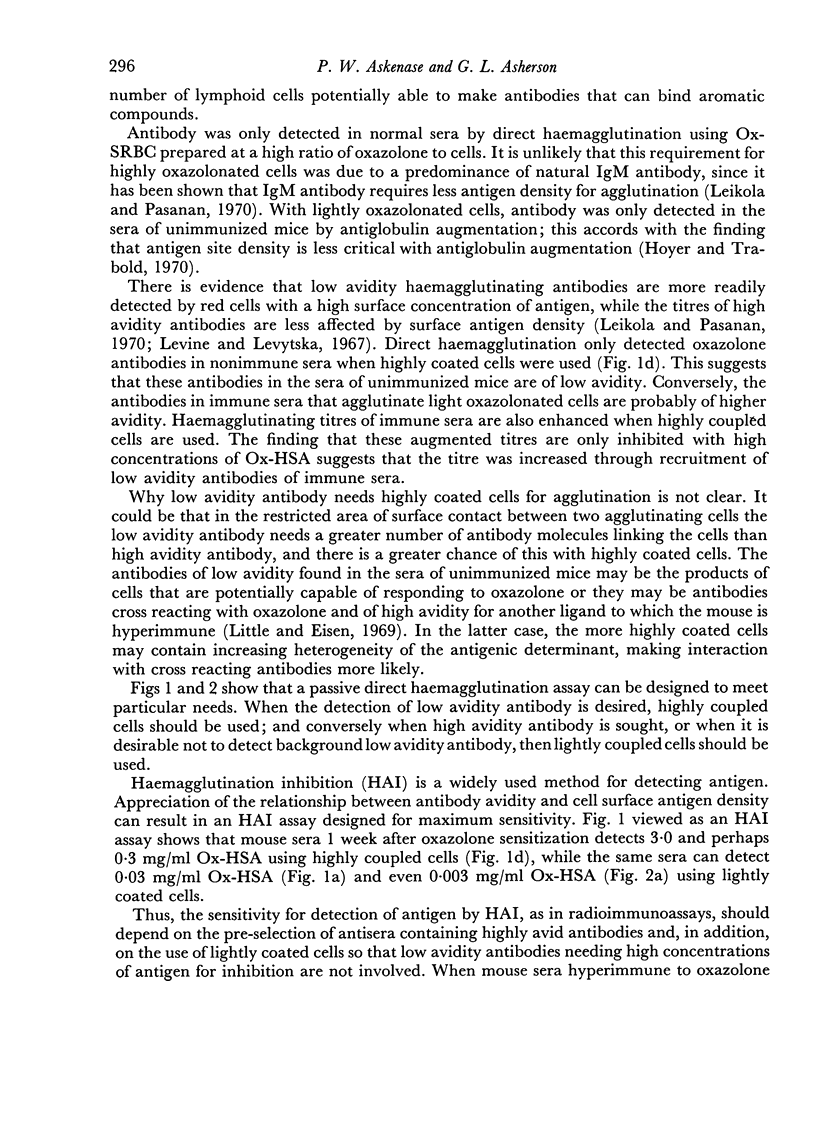
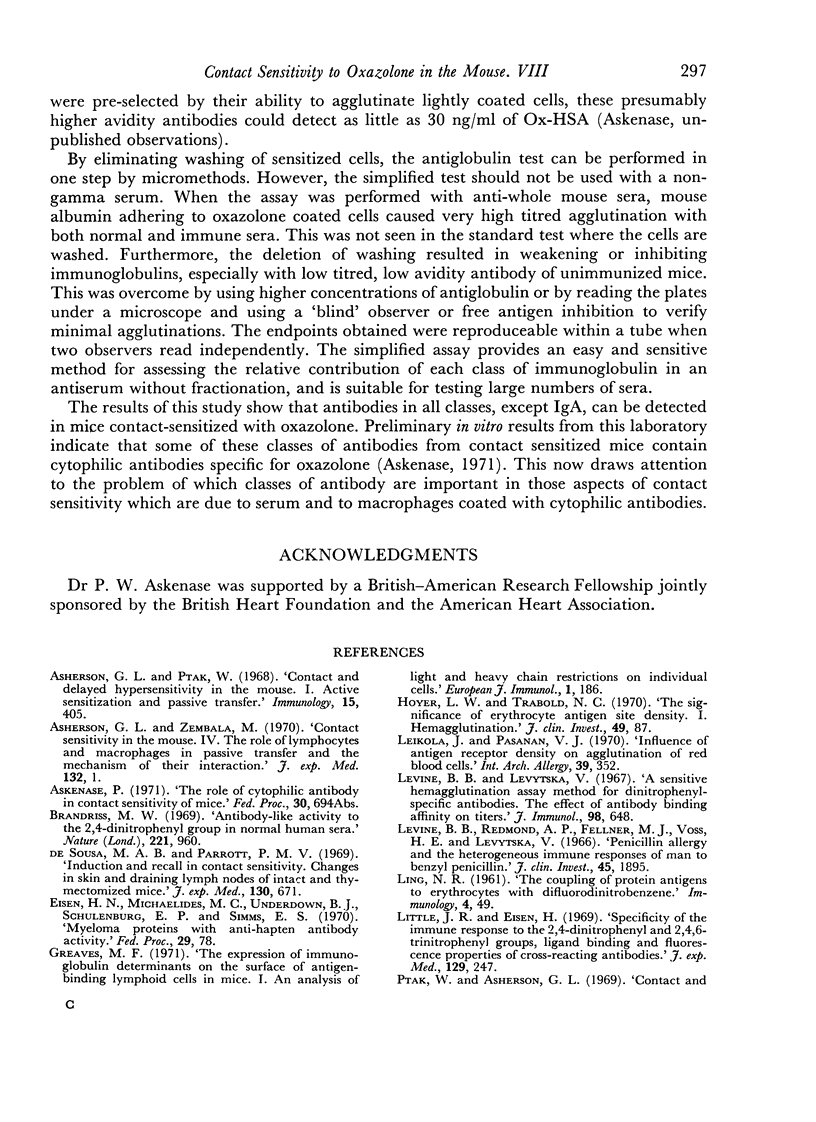
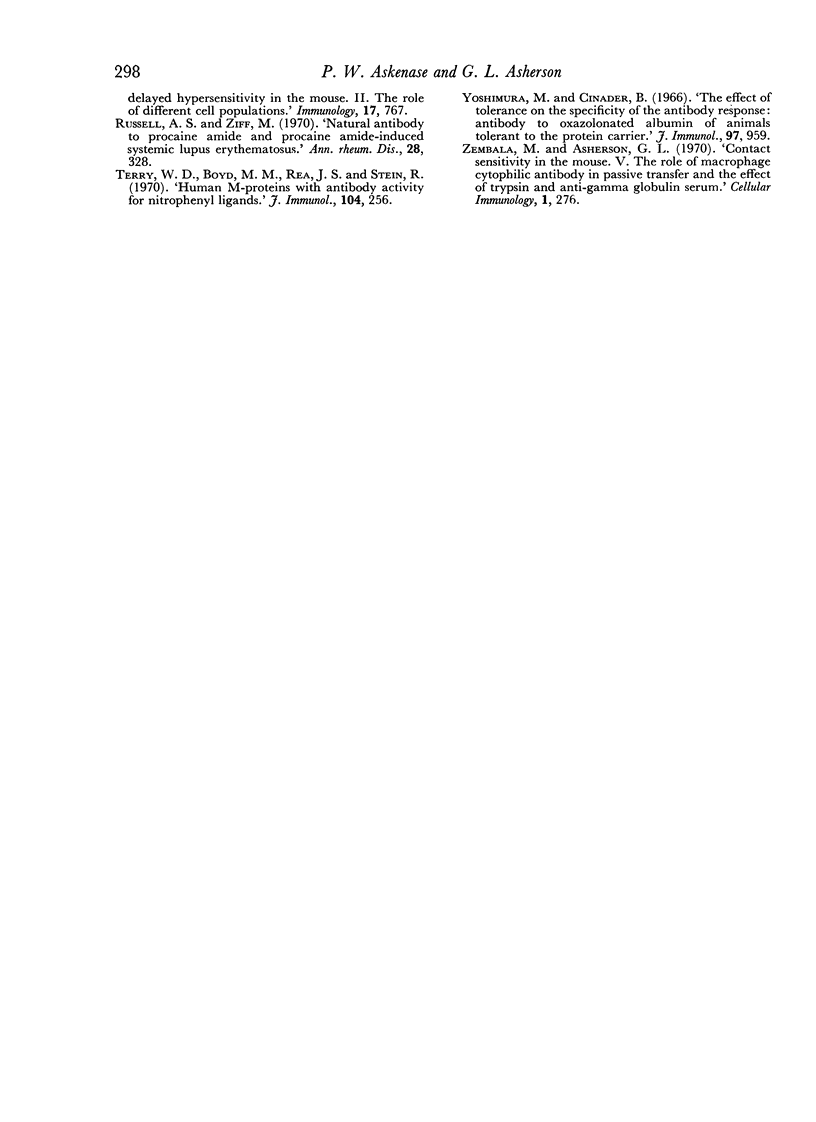
Selected References
These references are in PubMed. This may not be the complete list of references from this article.
- Asherson G. L., Ptak W. Contact and delayed hypersensitivity in the mouse. I. Active sensitization and passive transfer. Immunology. 1968 Sep;15(3):405–416. [PMC free article] [PubMed] [Google Scholar]
- Asherson G. L., Zembala M. Contact sensitivity in the mouse. IV. The role of lymphocytes and macrophages in passive transfer and the mechanism of their interaction. J Exp Med. 1970 Jul 1;132(1):1–15. doi: 10.1084/jem.132.1.1. [DOI] [PMC free article] [PubMed] [Google Scholar]
- Brandriss M. W. Antibody-like activity to the 2,4-dinitrophenyl group in normal human sera. Nature. 1969 Mar 8;221(5184):960–962. doi: 10.1038/221960a0. [DOI] [PubMed] [Google Scholar]
- Eisen H. N., Michaelides M. C., Underdown B. J., Schulenburg E. P., Simms E. S. Experimental approaches to homogenous antibody populations. Myeloma proteins with antihapten antibody activity. Fed Proc. 1970 Jan-Feb;29(1):78–84. [PubMed] [Google Scholar]
- Greaves M. F. The expression of immunoglobulin determinants on the surface of antigen-binding lymphoid cells in mice. I. An analysis of light and heavy chain restrictions on individual cells. Eur J Immunol. 1971 Jun;1(3):186–194. doi: 10.1002/eji.1830010308. [DOI] [PubMed] [Google Scholar]
- Hoyer L. W., Trabold N. C. The significance of erythrocyte antigen site density. I. Hemagglutination. J Clin Invest. 1970 Jan;49(1):87–95. doi: 10.1172/JCI106226. [DOI] [PMC free article] [PubMed] [Google Scholar]
- LING N. R. The coupling of protein antigens to erythrocytes with difluorodinitrobenzene. Immunology. 1961 Jan;4:49–54. [PMC free article] [PubMed] [Google Scholar]
- Leikola J., Pasanen V. J. Influence of antigen receptor density on agglutination of red blood cells. Int Arch Allergy Appl Immunol. 1970;39(4):352–360. doi: 10.1159/000230363. [DOI] [PubMed] [Google Scholar]
- Levine B. B., Levytska V. A sensitive hemagglutination assay method for dinitrophenyl-specific antibodies. The effect of antibody binding affinity on titers. J Immunol. 1967 Mar;98(3):648–652. [PubMed] [Google Scholar]
- Levine B. B., Redmond A. P., Fellner M. J., Voss H. E., Levytska V. Penicillin allergy and the heterogenous immune responses of man to benzylpenicillin. J Clin Invest. 1966 Dec;45(12):1895–1906. doi: 10.1172/JCI105494. [DOI] [PMC free article] [PubMed] [Google Scholar]
- Little J. R., Eisen H. N. Specificity of the immune response to the 2,4-dinitrophenyl and 2,4,6-trinitrophenyl groups. Ligand binding and fluorescence properties of cross-reacting antibodies. J Exp Med. 1969 Feb 1;129(2):247–265. doi: 10.1084/jem.129.2.247. [DOI] [PMC free article] [PubMed] [Google Scholar]
- Russel A. S., Ziff M. Natural antibody to procainamide and procainamide-induced systematic lupus erythematosus. Ann Rheum Dis. 1969 May;28(3):328–328. doi: 10.1136/ard.28.3.328-a. [DOI] [PMC free article] [PubMed] [Google Scholar]
- Terry W. D., Boyd M. M., Rea J. S., Stein R. Human M-proteins with antibody activity for nitrophenyl ligands. J Immunol. 1970 Jan;104(1):256–259. [PubMed] [Google Scholar]
- Yoshimura M., Cinader B. The effect of tolerance on the specificity of the antibody response: antibody to oxazolonated albumin of animals tolerant to the protein carrier. J Immunol. 1966 Dec;97(6):959–968. [PubMed] [Google Scholar]
- Zembala M., Asherson G. L. Contact sensitivity in the mouse. V. The role of macrophage cytophilic antibody in passive transfer and the effect of trypsin and anti-gamma globulin serum. Cell Immunol. 1970 Sep;1(3):276–289. doi: 10.1016/0008-8749(70)90049-3. [DOI] [PubMed] [Google Scholar]
- de Sousa M. A., Parrott D. M. Induction and recall in contact sensivitity. Changes in skin and draining lymph nodes of intact and thymectomized mice. J Exp Med. 1969 Oct 1;130(4):671–690. doi: 10.1084/jem.130.4.671. [DOI] [PMC free article] [PubMed] [Google Scholar]


